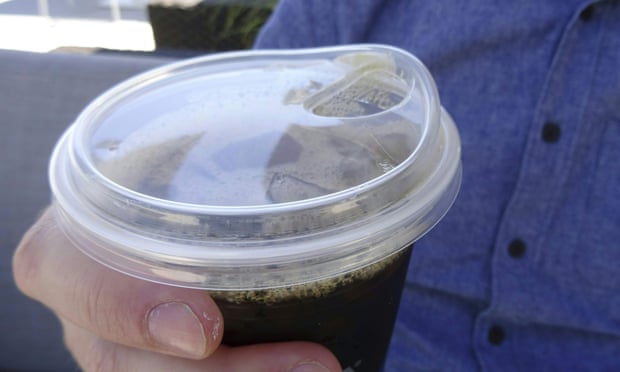The coffee giant has announced that it is phasing out straws. But are the new lids it’s introducing actually any better?
This month, Starbucks joined a growing movement to ban single-use plastic straws, announcing it would eliminate the items from its stores by 2020. In their place, the company will be introducing strawless lids, which have a sippable protrusion. It will also make alternative-material straws available.
Starbucks already has strawless lids available in more than 8,000 of its North American stores. These were developed for its “Nitro” coffee beverages which have a creamy top and are best drunk without a straw. Now, however, the coffee chain will be making the Nitro lids standard for all cold beverages, most of which now come with straws. Cold beverages make up more than 50% of Starbucks’s beverage mix, an increase from 37% just five years ago.
The Seattle-based coffee chain estimates that this move will eliminate more than 1bn plastic straws a year across its more than 28,000 stores around the world. It’s a big win for anti-straw advocates. But is it really a big win for the environment?
Reason, a magazine and blog published by the rightwing Reason Foundation, has claimed that the Nitro lids Starbucks will be making standard use more plastic than a combination of the company’s current lids and plastic straws. Some social media users have also noticed that the Nitro lids are noticeably thicker than the current lids and have speculated about whether they will really be better for the environment. The Guardian weighed the Nitro lids and found that they are indeed heavier than the current lid/straw combination, if only by a tiny amount. Nevertheless, even a tiny bit more plastic adds up quickly, considering Starbucks’s enormous scale.
Starbucks does not dispute that the new lids use more plastic. However, they stress that “the strawless lid is made from polypropylene, a commonly-accepted recyclable plastic that can be captured in recycling infrastructure, unlike straws which are too small and lightweight to be captured in modern recycling equipment.”
While it is true that plastic straws cannot be recycled, it should not be automatically assumed that the new plastic lids will definitely be recycled. Only 9% of the world’s plastic is recycled. A large number of things that are theoretically recyclable do not get recycled for reasons such as contamination.
Compounding this problem is the fact that the US exports about one-third of its recycling, the majority of which goes to China. At the beginning of 2018, however, China implemented a ban on importing plastic waste. Over the last few months states such as Oregon, which have relied heavily on exporting trash to China, have sent much of their recyclables to landfill while they look for another solution.
It is hard to gauge exactly how much Starbucks’s decision to increase its use of plastic, but eliminate plastic straws, will help the environment. To some extent the move to Nitro lids feels like a way to channel some easy PR from the growing anti-straw movement, rather than a meaningful sustainability initiative.
Where Starbucks can make a significant impact, however, is by tackling its disposable cup problem. The coffee chain is described as a “Cup Monster” by some environmental groups, and up to 6bn of its disposable cups end up in landfills every year.
Starbucks recently announced it plans to fix this; the company is working with McDonald’s to develop a global recyclable and/or compostable cup solution, and says it will “continue to push ourselves and work with the industry on solutions to reduce waste”. This isn’t the first time Starbucks has said it is working towards a better cup. A decade ago Starbucks said it would make 100% of its cups reusable or recyclable by 2015. That hasn’t happened yet.

BASIC:https://www.ismi.org.uk/resources/learning-zone/writing-a-standard-paragraph.aspx#.XdKmiEYzaUk
ReplyDeleteEXTRA: https://writingcenter.unc.edu/tips-and-tools/paragraphs/